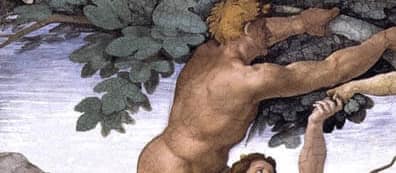The “Cursing” of the Fig Tree (Holy & Great Monday)
One of the main themes of Holy & Great Monday, in the Byzantine liturgical tradition, is our Lord’s “cursing” of the fig tree, after He finds no fruit on it just several days before His passion (Mk 11, Mt 21). Why did Jesus “curse” the fig tree?
There are two traditional explanations, the second of which, I think, is lesser known than the first: 1. He was warning the spiritually “fruitless” scribes & Pharisees (and the rest of us) that they/we would also end up withered and eternally-fruitless, were they/we to continue to refuse to bear fruit; i.e., to be of true service to God and others; 2. -Here is the lesser known explanation (although it is included in today’s Synaxarion, with a reference to Isidore of Pelousion): The tree of the Knowledge of Good and Evil in the garden of Eden, from which Adam and Eve ate and hence “fell”, was a fig tree, (not an apple tree!), according to ancient Jewish and Christian tradition. That idea stems from the fact that they made themselves clothing of fig leaves, in order to hide themselves right after “the fall.” See below, Michelangelo knew this, so he depicted this as a fig tree on the ceiling of the Sistine Chapel. So, our Lord curses the fig tree shortly before He proceeds to elevate Himself onto another Tree, of the Cross, in order symbolically to demonstrate that the “old” Tree of Knowledge is a thing of the past, and that He “could” have cursed us, and not the tree, for that whole incident back in the garden, – but He does not want to. Also, by making the leaves of the fig tree wither, He shows us that we no longer need to hide from God, sinners though we may be. We can come to Him, all we who are burdened and heavy laden, – and He gives us “rest,” when we take His yoke upon us, and let ourselves learn from Him, as One meek and humble in heart. We come to Him, and walk with Him, this Holy and Great Week, all the way to Golgotha and beyond, in meekness and humility. Remember us, O Lord, when You come into Your kingdom!






